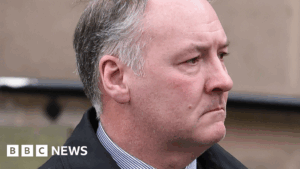
The federal public service in Australia comprises 198,000 individuals, including 35,200 in Services Australia, 21,400 at the Australian Taxation Office, and 16,000 in Home Affairs. Defence employs an additional 20,500 public servants and nearly 58,000 uniformed personnel, who are not counted in the public service headcount. This vast bureaucracy is overseen by numerous politicians, from the federal level in Canberra to local councils, managing a complex web of laws and regulations that often overlap between states and the federal government, creating costly duplication and confusion.
Businesses operating nationwide face up to 36 different versions of payroll tax. Bran Black, CEO of the Business Council of Australia, compares the complexity of complying with these varied payroll rates and thresholds to the challenges of the moon landings. He argues that Australia’s convoluted system of government is detrimental to both businesses and ordinary citizens.
“People genuinely have no understanding or a sense of our falling quality of life, which is only going to continue if there’s no change in direction. Federation reform is absolutely critical to turning this around,” says Bran Black.
The Economic Impact of Governance
NSW Premier Chris Minns acknowledges the economic strain caused by the current state of the federation. “I think the short answer is yes,” he says, reflecting on the gridlock and inefficiencies that persist despite changes in political leadership. His counterpart in Queensland, David Crisafulli, advocates for “competitive federalism,” where states act as natural economic experiments with varying policies. However, Crisafulli concedes that the federation’s structure imposes significant economic costs.
Challenges in Rail and Transport
One historical milestone in Australian federation was the unification of rail gauges between NSW and Victoria in 1962, ending decades of logistical challenges. Yet, rail operators still face hurdles across a network intended to facilitate the movement of freight and people. Natalie Currey, general manager of supply chains at the Australasian Railway Association, highlights the need for separate state approvals for everything from rolling stock to signalling boxes. Locomotives require multiple communication systems due to disparate public and private networks.
“Hundreds of millions of dollars, if not billions, could be saved if we did things better,” says Natalie Currey.
Research for the association estimated that spending $104 million on harmonizing the network could yield $1.8 billion in financial benefits.
The E-bike Dilemma
E-bikes, though less powerful, play a crucial role in personal mobility. However, a 2021 federal change to e-bike definitions has led to significant issues. Peter Bourke, general manager of Bicycle Industries Australia, links this decision to an increase in e-bike battery fires and injuries. The inconsistency between standards in NSW and the rest of the country has isolated NSW from the international market, with major brands withdrawing.
“Australia does not have an e-bike manufacturing industry. Australia is a small market for manufacturers across the world and NSW has effectively isolated itself from the rest of the market,” Bourke notes.
Health and Housing: A Federation in Crisis
South Australian Premier Peter Malinauskas likens the duplication in government responsibilities to a game, particularly in health care. The federal government oversees general practice and aged care, while states manage public hospitals. This division leads to inefficiencies and increased costs, with federal MPs not feeling the political pressure from overcrowded hospitals, and state MPs avoiding blame for issues in general practice and aged care.
The housing sector is another area of concern, involving federal, state, and local governments. Despite federal initiatives to boost housing supply, states often find themselves needing to co-fund these efforts. Former Treasury secretary Ken Henry emphasizes the need for national laws to facilitate housing and infrastructure development, warning that without such changes, achieving targets for net zero emissions and other goals will remain a dream.
“To put it bluntly, there is no chance of Australia meeting stated targets for net zero, renewable energy, critical minerals development, housing and transport infrastructure without very high-quality national laws,” Henry asserts.
Fiscal Imbalance and the Future of Federation
The financial relationship between federal and state governments has evolved significantly since 1901, with Canberra now collecting the majority of taxes. This “vertical fiscal imbalance” leaves states with limited revenue sources, despite being responsible for over half of government spending. Economist Saul Eslake warns that the fiscal habits of states pose a risk to the federal government’s credit rating.
Western Australia, benefiting from a mining boom, has seen its share of GST revenue collapse, prompting federal intervention. However, this has led to an inequitable distribution of resources, with federal taxpayers subsidizing WA to the tune of $60 billion by the end of the decade.
“The fiscal proclivities of the states and territories represent the biggest risk to the federal government’s triple-A credit rating,” says Saul Eslake.
Energy policy remains another contentious area, with state legislation underpinning the National Energy Market. Former South Australian premier Jay Weatherill criticizes the lack of a carbon pricing mechanism, which he sees as a fundamental issue in energy policy.
As Australia grapples with these challenges, University of Queensland expert Flavio Menezes suggests that the nation operates as a collection of smaller economies, each with its own regulatory hurdles. The need for reform is clear, but as Curtin University’s Alan Fenna notes, the system is not yet dysfunctional enough to prompt significant change.
Federal Treasurer Jim Chalmers acknowledges the complexity of federation reform but remains optimistic about potential progress. “To be brutally honest with you, when I came here, I thought federation reform might be a dry gully, just people arguing over the carve-up, with not much progress to be made,” he says. “But my view has changed a lot, a lot.”
“Federalism as it operates in Australia may be suboptimal, but it’s not bad enough to push people to do something about it. Until things are bad enough, there’s no incentive to do anything about it,” says Alan Fenna.
As the nation faces stagnating living standards, declining productivity, and growing government debt, the need for reform becomes increasingly urgent. Tomorrow, we will explore what changes are underway and what further steps are necessary to address these pressing issues.






